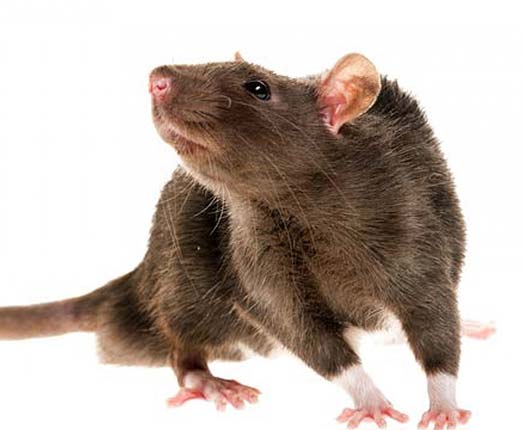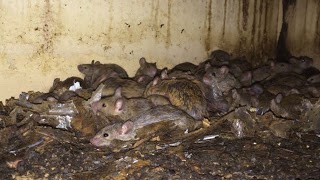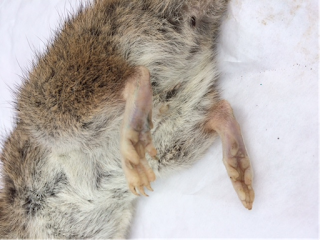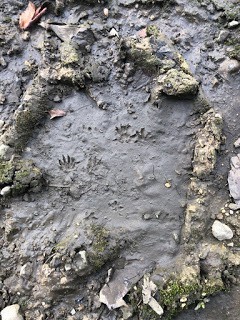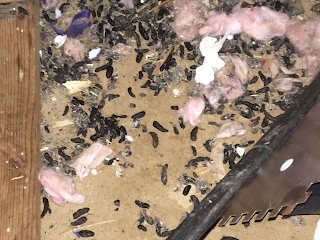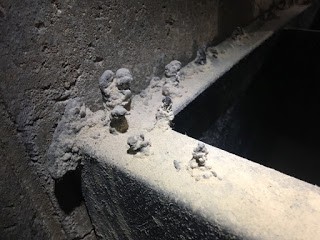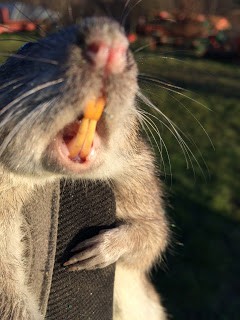Seven signs of rodents
Wednesday 2nd May 2018
Seven signs of rodents
If you have never been near a rodent let me tell you the signs that they are in your space:
“I smell a rat!”
It’s not just a clever saying. Rodents have their own funky smell, much like a hamster cage or a horse stable. Basically, this is from their prodigious bowel movements but also from the very fragrant oil that coats their pelts.
Now, about that oil… rats and mice have quite greasy coats. The oil helps keep them warm in the winter, think of the weirdos inspiring people that swim across the channel, they all cover themselves in goose fat as insulation because oil is excellent at keeping the heat in. But that oil also picks up a lot of dirt. Just imagine spraying yourself with olive oil and crawling across the living room carpet, you’d pick up quite a lot of stuff, right?... Now please imagine cleaning yourself off so we can get back to the blog…. Thank you… The rats and mice with wonderfully oily dirty coats are a very tactile bunch. Because their eyesight isn’t great, they navigate using touch as much as their other senses. If you watch them walk it’s almost like they’re hugging their route. This leads to a greasy smear being left in the rodents’ wake. Being creatures of habit, they follow the same paths again and again and, before long, the greasy smear mark is quite noticeable.
Stumpy little rat legs mean they don't get much ground clearance.
When rodents move, they constantly rub their undercarriage on the surface beneath them. Again, if you are a rat with a wonderful sense of smell but dodgy eyes, this is a great method for finding your way around. Just follow the smell of the tummy of the rat that went before you.
Of course, the bad thing about this is that once you’ve killed an unwanted rat that has entered your premises, other rats can follow their noses to find the same access point. At Dealey, we put great emphasis on sealing up those entry holes; otherwise, you’ll just be calling us again in a week. And while we love our customers, there is such a thing as having a bit too much time with your pest controller and, hey, we want to save you a bit of money in the long run too.
The good thing about belly-rubbing-rodents is that they make a pretty visible trail through the undergrowth. Good pest controllers aren’t necessarily just good killers, it’s more about tracking, following the critters on their pesky path and then just controlling the environment until they either find it impossible to survive and keel over or head elsewhere.
Another sure-fire sign of rodents is stumbling upon lozenge-shaped droppings.
Rat ones are big, about the size of a Tic-Tac (sorry) and mouse ones are small, about the size of an ant. These are usually hidden away somewhere like in the back of cupboards or storerooms or under old bits of rubbish. If there are mouse dropping all over the upstairs window sills, it’s more likely you’ve got bats than mice, but that’s another blog post (or if you’re desperate and can’t wait for that post- go here: www.bats.org.uk)
More about excreta, oh, dear. Mice are habitual widdlers (feel free to use that phrase in your everyday life, “oh yes, that’s my great aunt Carol. She’s a habitual widdler”), they always urinate in the same place. Over a long period of time, this habitual widdling leads to a build-up of dried urine. It builds up and up like a stalagmite, honestly no joke. It gets ridiculous when the stalagmite gets taller than a mouse, and you know that the little critters are doing handstands to add their bit on top. These are called urination pillars.
I didn’t think these would be worth bothering about when I was being trained in pest control back in the 90s. Surely, you’d have to have more mice than Microsoft to get a build-up of wee?! But how wrong I was. Urination pillars can be found in many places where mice have existed out of sight out of mind. Behind kickboards in kitchens, along long-forgotten soil pipes or under floorboards.
I went to a pig farm once where the mice and the workers had been happily coexisting for years. The pig men used to adjust the feed for their pigs to include the ‘Angel’s Share’ of mouse food. They also used to come across these oily stalagmites building up on the sides of the pig sheds. They never had any idea that these phantom bundles of goo were urine, so they used to pick them up and flick them at each other! True story.
Obvious signs like scampering noises above the ceiling and bumping in walls are not worth our time here. If you hear these, it’s obvious you’ve got rodents, just give us a call and stop reading blogs. One small point of interest, though- the difference between a mouse scamper and a rat scamper. They both have the same sort of grippy little claws that make a scratchy dashing noise, but rats also have long, muscular tails. If it sounds like a mouse is dragging a dead snake behind it, it’s actually a rat unless a mouse is dragging a dead snake behind it.
The last one- do you know why rodents are called rodents? It’s from the Latin- Rodere- to gnaw. You see, these creatures have very long incisors which grow continuously throughout their lives.
To stop their incisors growing out of control, rodents have to gnaw at things to file them down. All very cute until they start going at electric wires and cause thousands of pounds of factory shutdowns, electrician bills, fires etc.
Watch out for those gnaw marks, if they get out of hand you can expect some serious damage from our four-legged friends.
Of course, at Dealey, we are all about environmental control. If the rodents get in, you’ve already lost the battle, and it’s time for war. If you can keep them outside, there’s no reason why we can’t just encourage them elsewhere by making your site as unattractive as possible. Control the environment and pest control follows naturally.
So there you have it. Not an exhaustive list, but seven good signs to get you started.
- Smell
- Smear Marks
- Tracks through planted areas
- Droppings
- Urination pillars
- Scampering noises
- Gnawing
If you’re still not sure, give us a shout. We can help with any worries you have:
Dealey Environmental Protection, Lower Farm, Troston, Suffolk IP31 1EW.

